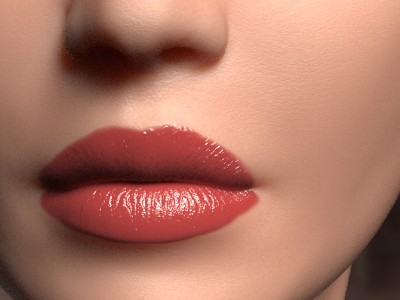
|

|
BRDFTraditional shading models gives a hard computer generated look. |
BSSRDF Our new shading model captures the soft appearance of many natural materials such as skin. |
Henrik Wann Jensen
Steve Marschner
Marc Levoy
Pat Hanrahan
Stanford University

|

|
BRDFTraditional shading models gives a hard computer generated look. |
BSSRDF Our new shading model captures the soft appearance of many natural materials such as skin. |
Note that the face model we used is pretty simple: few triangles, no texture (only a map separating the skin from the lip), one bumpmap, and one light source. The idea is to show the substantial difference that can be obtained with our new model without trying to fake subsurface scattering. See the paper for some examples of milk and marble as well.
This paper introduces a simple model for subsurface light transport in translucent materials. The model enables efficient simulation of effects that BRDF models cannot capture, such as color bleeding within materials and diffusion of light across shadow boundaries. The technique is efficient even for anisotropic, highly scattering media that are expensive to simulate using existing methods. The model combines an exact solution for single scattering with a dipole point source diffusion approximation for multiple scattering. We also have designed a new, rapid image-based measurement technique for determining the optical properties of translucent materials. We validate the model by comparing predicted and measured values and show how the technique can be used to recover the optical properties of a variety of materials, including milk, marble, and skin. Finally, we describe sampling techniques that allow the model to be used within a conventional ray tracer.
Reference: Henrik Wann Jensen, Stephen R. Marschner, Marc Levoy and Pat Hanrahan: "A Practical Model for Subsurface Light Transport". Proceedings of SIGGRAPH'2001.